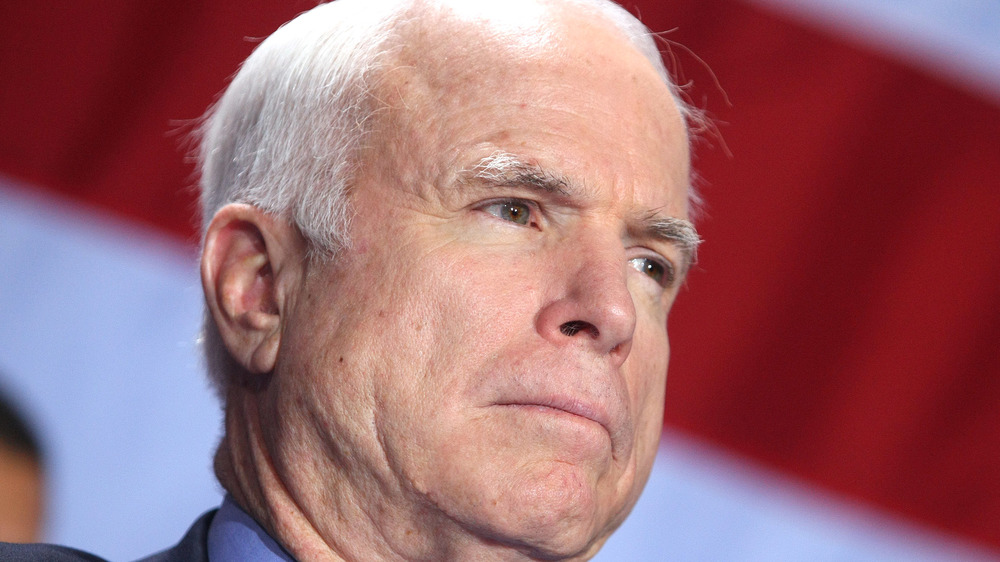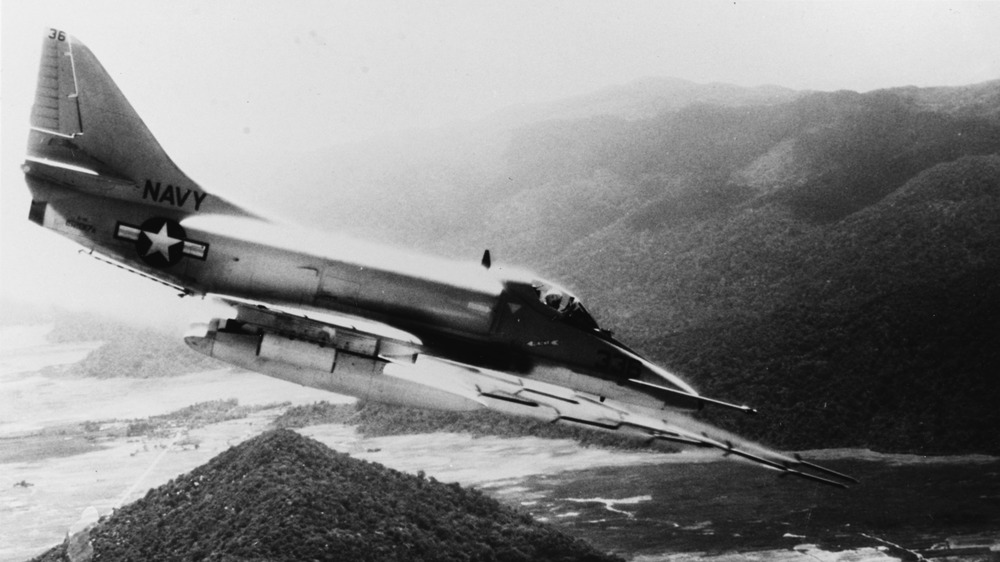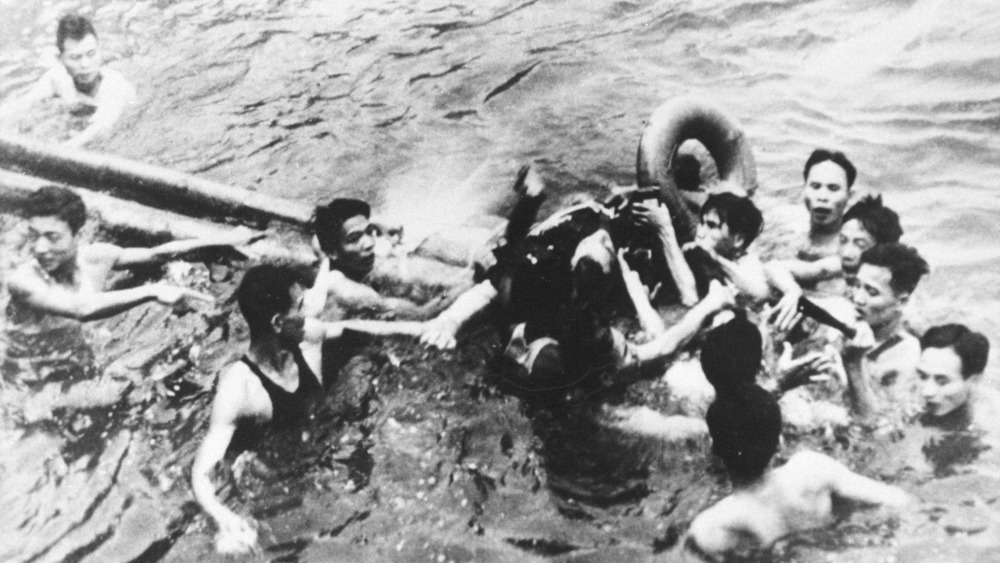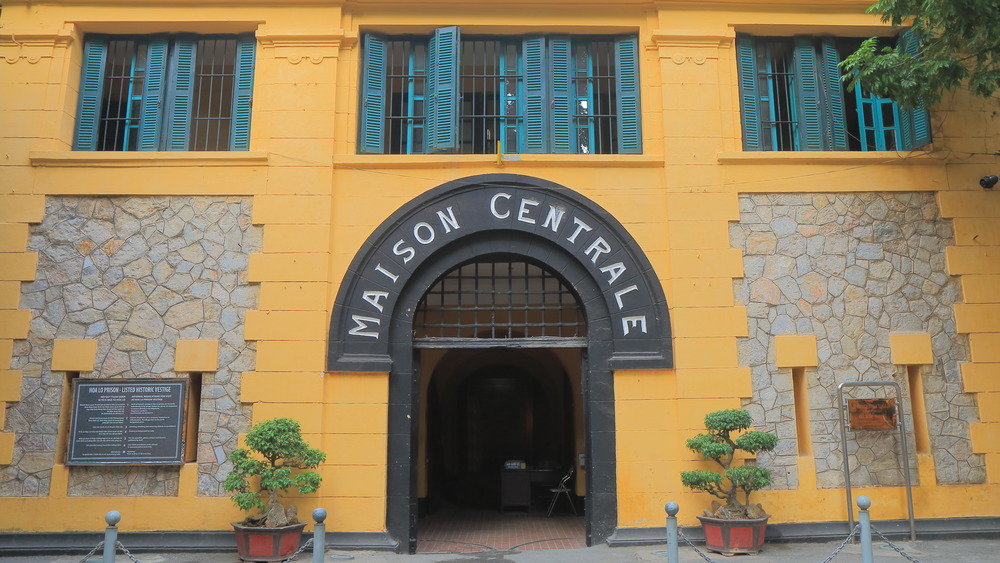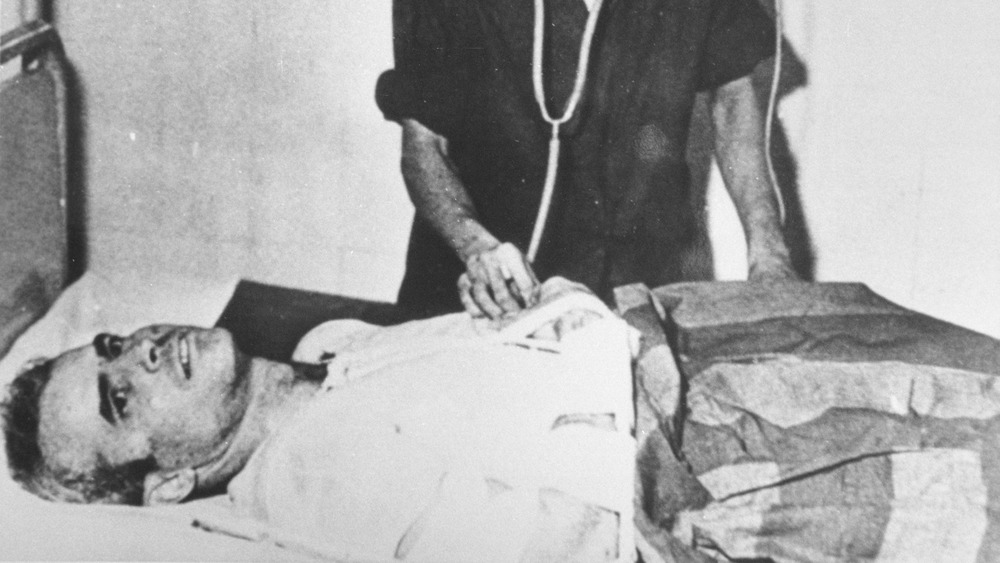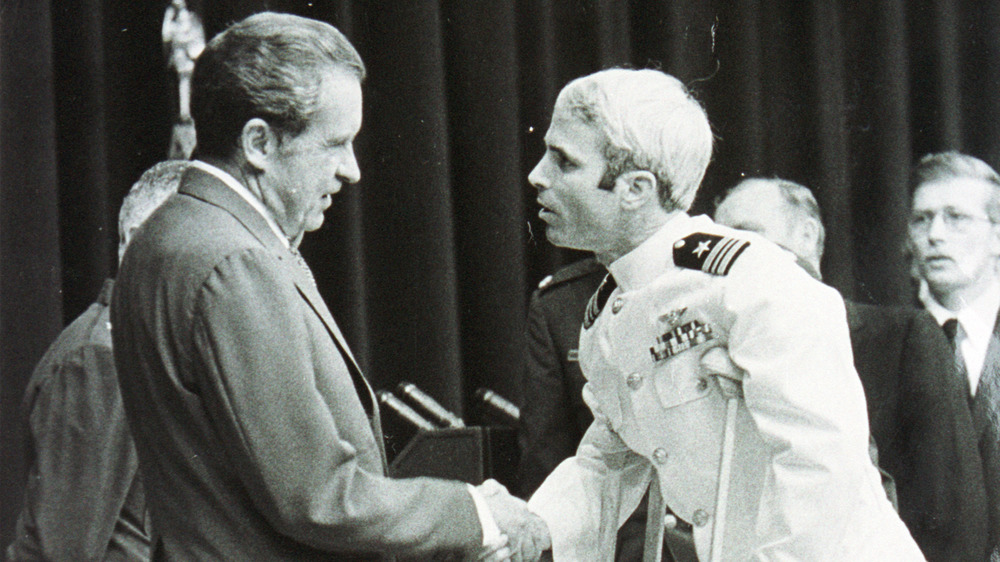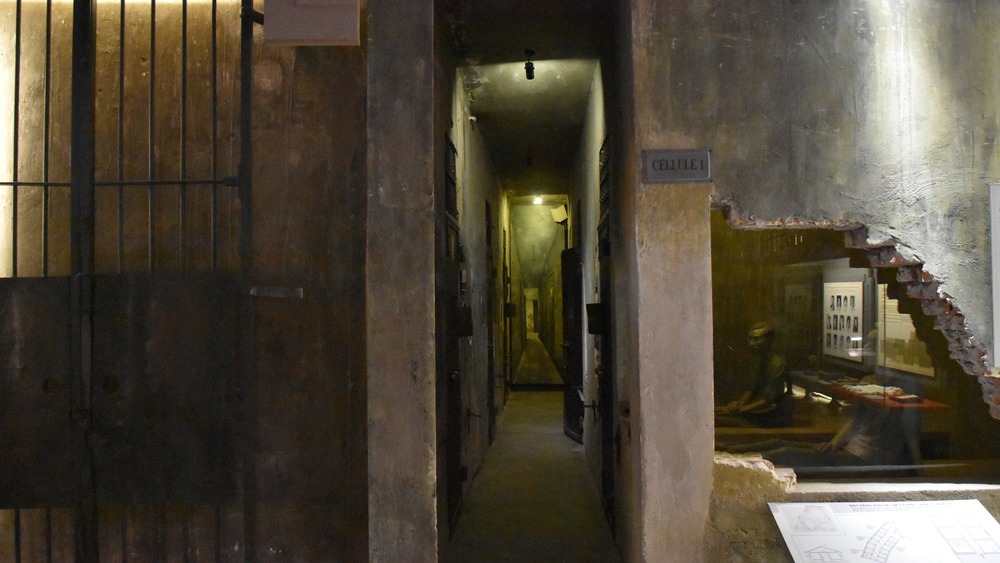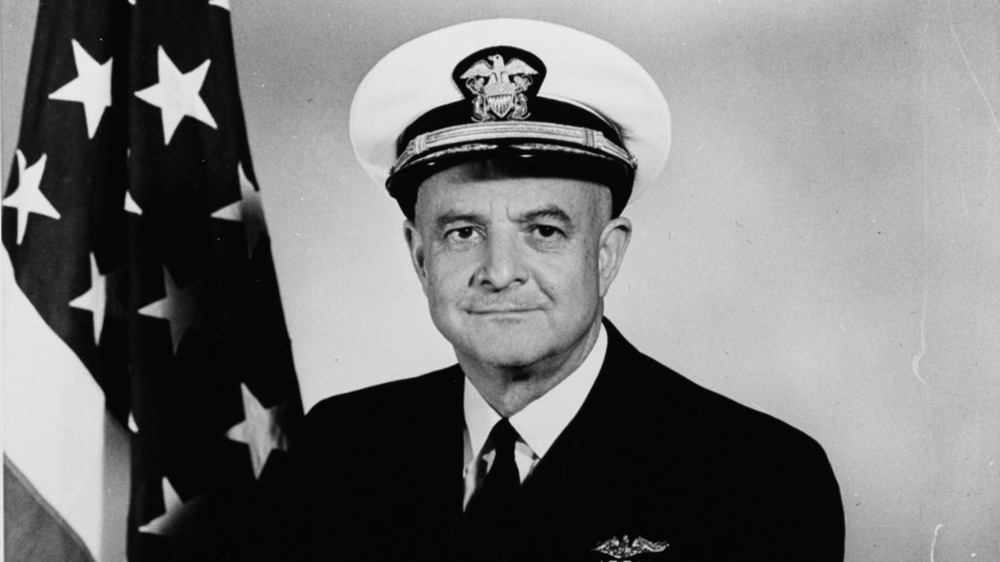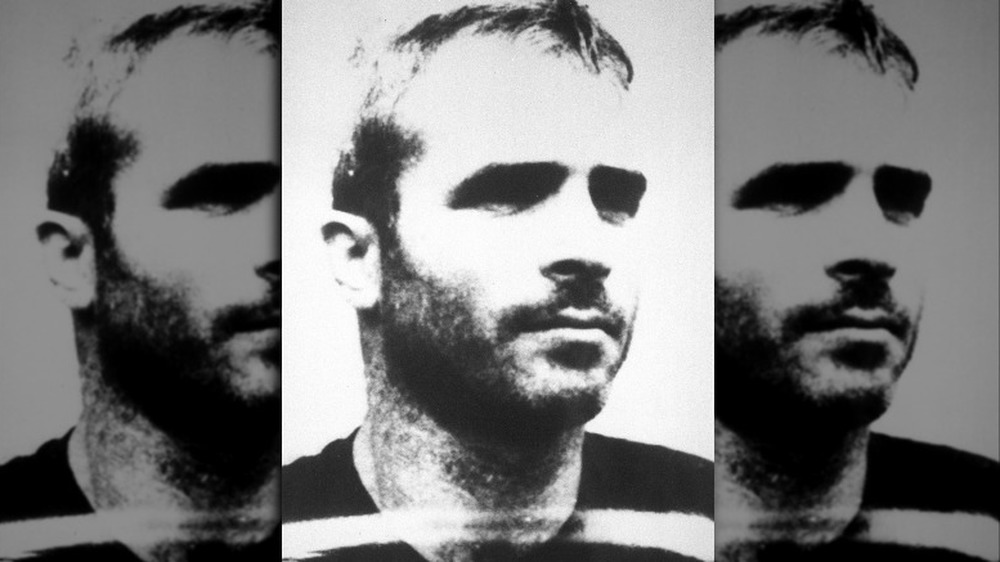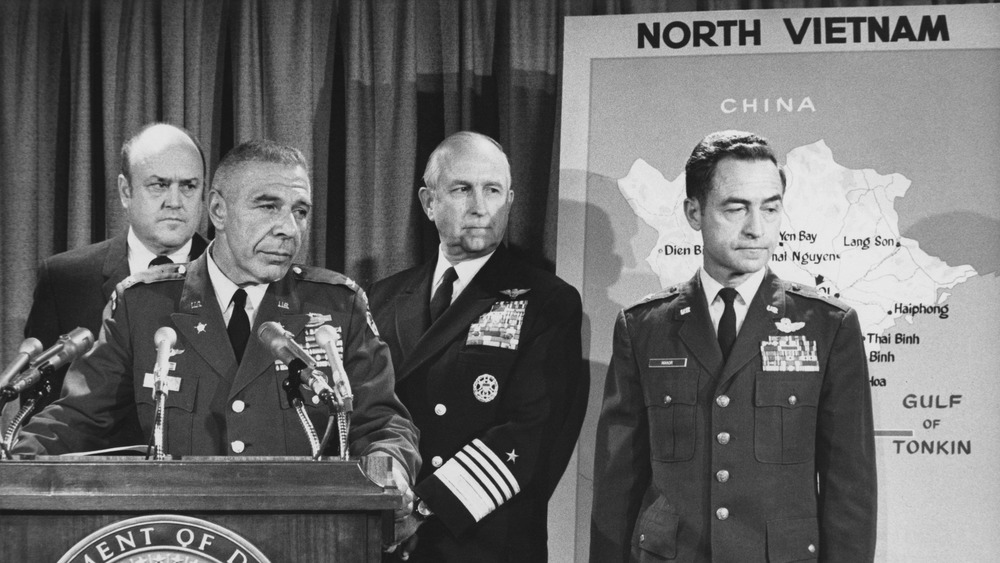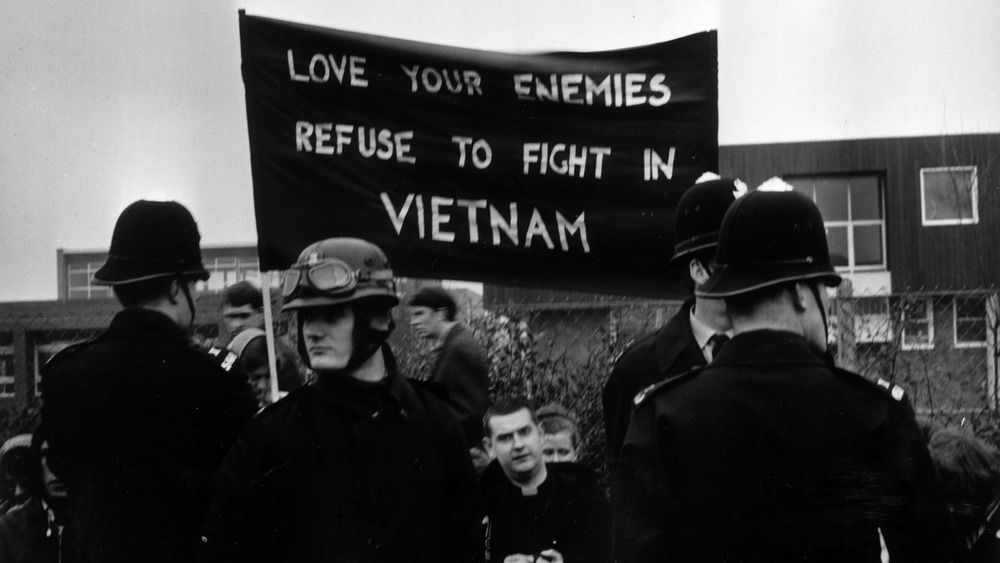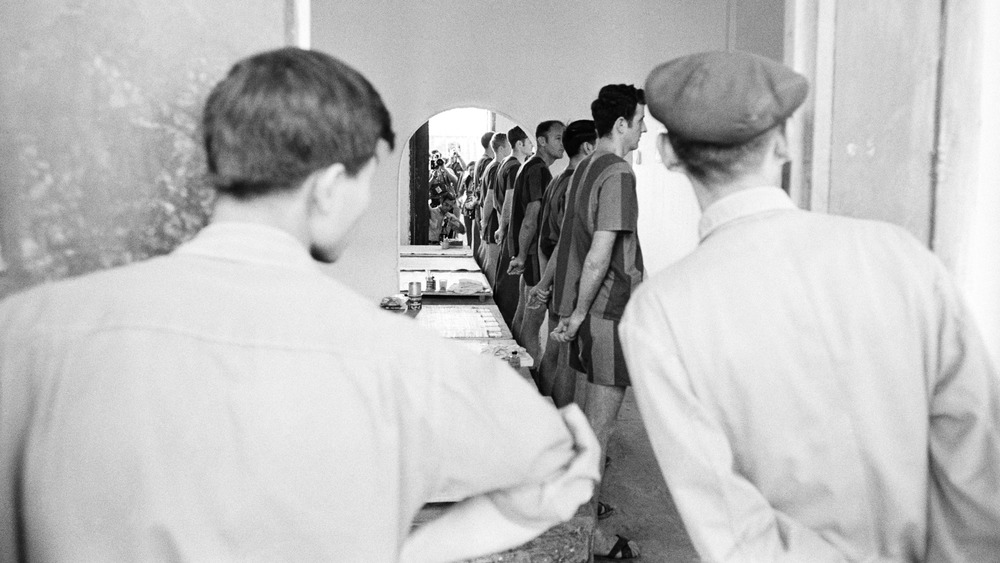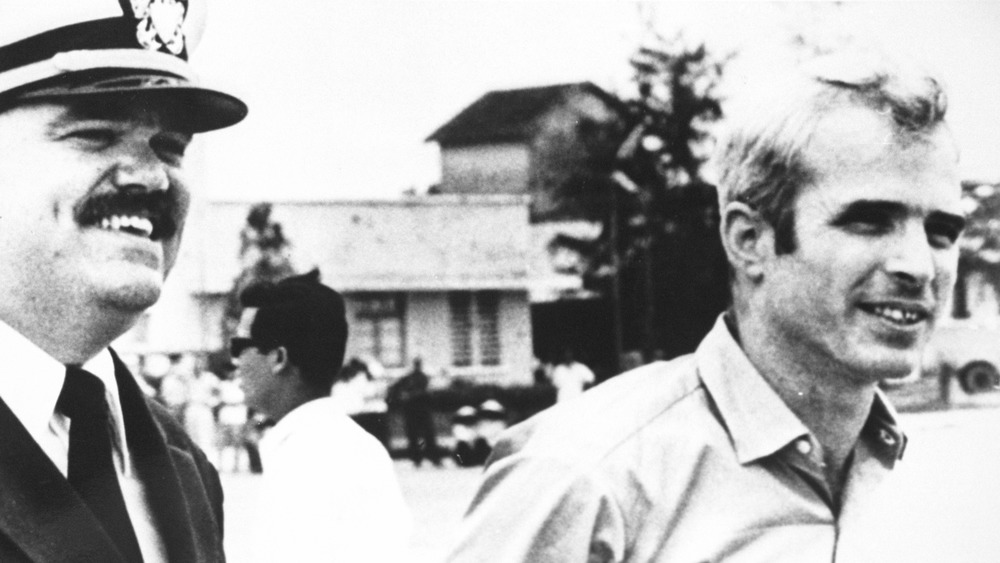Tragic Details About John McCain's Time As A POW
The late John McCain can be notably remembered today for his decades-long role as a congressman for Arizona, as well as his candidacy for the United States presidency in the 2008 election. But even before his life in politics, McCain had been representing his country when he was part of the U.S. Navy as a naval aviator. According to Britannica, his family had a long history in the military, and his father and grandfather were both admirals who graduated from the U.S. Naval Academy before his own attendance in the late 1950s.
Serving in the navy as a ground-attack pilot, he fought in the Vietnam War, during which he was taken by the North Vietnamese and detained as a prisoner of war for nearly six years, from 1967 to 1973. Two months after his release, McCain's vividly detailed first-person account of that experience was published in U.S. News & World Report on May 14, 1973. Here are the tragic details of John McCain's time as a POW during the Vietnam War.
The day John McCain "got killed" by a missile the size of a telephone pole
According to U.S. News & World Report, it was on October 26, 1967, when John McCain was around 4,500 feet in the air flying over Hanoi that he was shot down in his Skyhawk dive bomber. A missile "the size of a telephone pole" had blown one of the wings completely off, and the aircraft began spiraling straight down. Quickly, McCain pulled the ejection handle, but the force of the ejection knocked him unconscious until just before he landed by parachute in Truc Bach Lake, according to Time.
While he didn't realize it at the time, three out of four of his limbs had been badly injured in the air. His right leg around his knee, his left arm, and his right arm were all broken before he even landed in the water. His helmet and oxygen mask had also been blown off. McCain and his fellow POWs would refer to this as the day they "got killed" instead of "got shot down," because "in a way becoming a prisoner in North Vietnam was like being killed."
John McCain was attacked by a mob in Hanoi
Hitting the water of the 15- to 20-foot-deep lake, John McCain immediately began to sink to the bottom, weighed down by 50 pounds of equipment and gear. Dazed, he sank and kicked himself up off the floor of the lake three times. At this point, he still hadn't realized his leg and arms were broken and was confused as to why he could only use his left leg. On his third attempt to kick back up, he failed to reach the surface and finally remembered his life preserver. Taking the toggle in his mouth and pulling, McCain at last rose to the top after the preserver inflated (via U.S. News & World Report).
Once McCain was afloat, North Vietnamese army soldiers swam over and pulled him out, stripping him of everything but his undergarments. A huge mob quickly formed, "hollering and screaming and cursing and spitting and kicking" at him. At this point, McCain noticed the condition of his right knee and screamed, but it only seemed to inflame the crowd even more. His shoulder was smashed by the butt of a rifle, and his foot was stabbed with a bayonet.
McCain was taken to Hanoi's main prison
Eventually, the mob was dispersed, and John McCain was taken into Hanoi's main prison, Hoa Lo (also known as the Hanoi Hilton), on a stretcher, as per Time. For three or four days, he went in and out of consciousness. Several times during this period, he was interrogated and subsequently beaten for withholding military information, knocked out by every hit because he was in such bad shape. Besides his "name, rank, serial number and date of birth," the injured McCain refused to give anything else, as reported in U.S. News & World Report.
The North Vietnamese threatened to not give him any medical treatment until he provided them the info they wanted. At first, McCain saw this as a bluff. He believed that he'd be taken to the hospital soon enough and just needed to hold on a little while longer. It wasn't until he saw the awful state of his knee, which had swollen to look like a football, that he agreed to talk in exchange for treatment.
Initially, the medics who were brought in declared that it was too late. For the North Vietnamese, it was a waste of time to treat anyone who was badly injured. This is why there were rarely any amputees among the POWs who returned. However, after somehow learning that McCain's father was "a big admiral," they excitedly rushed into his room and announced that he would be going to the hospital.
A "filthy dirty" hospital room and an interview with a Frenchman
Under the impression that they had caught the "crown prince," the North Vietnamese used John McCain's capture in a big propaganda campaign, boasting the news to the world. At the hospital, though, McCain was placed in a "filthy dirty" room that would flood whenever it rained. The 16-year-old guard assigned to him would slap him around for fun and eat the rest of the food after stuffing three or four spoonfuls into McCain's mouth (via U.S. News & World Report).
For about ten days, McCain rarely saw any doctors or nurses. Then, one day, a French television man was expected to visit. Doctors quickly came in and spent 90 painful minutes trying to cast McCain's arm, all without any anesthesia, before giving up, putting a chest cast on him, and rolling him into a room with a nice white bed. McCain was now interview-ready.
However, the POW initially refused to be filmed. Once again, the North Vietnamese threatened to not operate on his leg unless he agreed to be interviewed. They wanted McCain to talk about how grateful he was to the Vietnamese people and apologize for his crimes. While the aviator couldn't refuse the interview, he was able to refrain from making those concessions, with the Frenchman cutting in whenever the North Vietnamese would begin their pressures. McCain's wife later collected the filmed tape in Paris, and the interview was shown on CBS in the United States.
John McCain's broken and swollen knee is finally operated on
John McCain's move to the big hospital room with the nice white bed seemed to just be for appearances. Swiftly after the interview, he was moved back to his original filthy room, and it took two weeks before his broken knee was finally operated on. Only one operation was finished, though, as the North Vietnamese denied him a second necessary operation because of his "bad attitude," as reported in U.S. News & World Report. Later, when he returned to the U.S., his leg was looked over by an orthopedic surgeon who, at a mere first glance, saw issues with the incisions made during McCain's one operation.
After six weeks in the hospital, McCain was put in a cell with two Air Force majors in December 1967. At this point, McCain was in awful shape, weighing only about 100 pounds and mostly immobile. The two men he shared the cell with, named Norris Overly and George Day, had to do everything for him during this recovery state, including feeding and washing him. The majors didn't expect McCain to last long, but with their care, he ended up recovering quickly.
Over two years of solitary confinement
By March 1968, both George Day and Norris Overly had been moved out of the cell. From then on, John McCain would be in solitary confinement. For more than two years, he was alone in a hot 10-foot by 10-foot room with no windows and a dim light bulb that was on all day and night. While prisoners were supposedly able to bathe every other day, the camp that McCain was at had water problems, so he would also go up to a month without a bath. To make matters worse, he was typically taken out last when there was no water left, so he'd just stand for five minutes before being returned to his cell (via U.S. News & World Report).
It was during solitary confinement that McCain said communication was absolutely "vital for survival." He eventually was able to communicate through the wall with a civilian pilot named Ernie Brace, who was in the cell behind him. When McCain was caught talking through the wall, the North Vietnamese reacted mildly, with a simple "tsk, tsk" or "no, no." According to McCain, for those first three months in solitude, "things were not too bad."
John McCain was tortured after refusing an offer of early release
What may come as surprising to some is that, as the son of a prominent admiral (pictured above), John McCain was actually offered a chance to go home earlier than those captured before him. He was pressured to do so by the North Vietnamese, who wanted to not just get positive publicity but also twist the event into propaganda. As McCain put it, his early release would have given them the chance to say something like, "Look, you poor devils, the son of the man who is running this war has gone home and left you here. No one cares about you ordinary fellows," to the other POWS, as reported in U.S. News & World Report.
When McCain was offered early release in June 1968, he refused multiple times, abiding by the code that prisoners be released in the order of capture. No special favors and no special treatment. After about a month and a half of McCain refusing early release and to write a confession, his captors began to brutalize him. For days, McCain was "beaten every two to three hours by different guards." On the fourth and final day, he reached his breaking point and finally agreed to "confess his crimes." He never released any meaningful intel, though. As told by Time, when asked to list all of the men in his squadron, McCain named the offensive players of the Green Bay Packers instead.
Rough treatment continued for over a year
According to John McCain, after having him write his "confession," the North Vietnamese made a serious mistake: He was allowed a few weeks to rest and recover. According to U.S. News & World Report, that short period of rest is what gave him the power to resist and carry on, since being "broken" and then having time to recover made him stronger. Soon, he felt well enough to continue secretly communicating with his fellow prisoners. Unfortunately, the guards' mild reactions from before were long gone. Every time he got caught communicating, he was beaten.
After two POWs had been caught escaping from a nearby camp, the rough treatment intensified. All prisoners were then tortured for any escape plans. Their rooms were also inspected much more strictly than before, and for nearly four months, all they had to eat was pumpkin soup, bread, and sweet bean soup. Most of the men became increasingly malnourished and underweight.
Suddenly, the extreme torture stopped
After a few POWs were released back to the U.S. in horrible conditions, the new Nixon administration allowed for the brutality in the camps to be publicized in the fall of 1969. According to John McCain's account in U.S. New & World Report, before this time, the U.S. government had avoided publicly addressing the POW situation over concerns that it would worsen the conditions of those still in the camps. However, when a former POW named Frishman held a press conference, the awful conditions and treatment of American prisoners by the North Vietnamese were exposed. Suddenly, North Vietnam, which had hoped to have world opinion and support on its side, was faced with a surge of negative international attention.
Around the end of September 1969, the treatment of prisoners got noticeably better. It was mostly small things, such as the removal of a board that blocked ventilation or some more bathing time, but for John McCain, the improvements were "all very amazing."
John McCain was pressured to see anti-war delegations
While John McCain explained that he no longer experienced brutal torture after 1969, this, of course, didn't mean that things were easy. The North Vietnamese increasingly tried to pressure the prisoners to see anti-war delegations. Following one unfavorable meeting, McCain refused to see any other visitors. His rejections were not received well.
As per U.S. News & World Report, in one incident, he was forced to sit on a stool in the courtyard for three days straight. Despite finally getting a roommate in March 1970, by June, he was back in solitary confinement in a room known to the men as "Calcutta." This room was drastically smaller than his previous cells. Measuring 6 feet by 2 feet, it had no ventilation and became extremely hot in Vietnam's tropical climate. It was also 50 yards away from the other prisoners and had no washing facilities. That summer, McCain suffered heat prostration multiple times, as well as dysentery.
Showdown at Camp Unity
From September to December 1970, John McCain continued to be moved to various buildings at the prison camp before finally being taken to what he referred to as "Camp Unity." The building was made up of seven large rooms that housed about 45 to 50 men each, though the prisoners were prohibited from having "meetings" comprised of more than three people at a time (via U.S. News & World Report).
They were also strictly barred from having church service, which was a significant point of contention for the men. One day, in March 1971, a "showdown" over church, organized by the senior officers among the prisoners, occurred, with the POWs holding a service in defiance. Ignoring orders to stop, the men began loudly singing hymns and "The Star-Spangled Banner." The North Vietnamese reacted as if it was a riot, employing ropes and "judo holds." Once it settled, the men were sent to a punishment camp they referred to as "Skid Row," where they were in solitary once again until November 1971, save for a brief return to Camp Unity in August because of flooding.
The Christmas bombing of 1972 and John McCain's long-awaited release
From late 1971 to late 1972, John McCain remained at Camp Unity. Aside from a few incidents, he described this time as a sort of "coasting period," where the experience was comparably much better than before. The prisoners started to get packages every year with vitamins and were permitted to exercise. According to McCain, he was in better physical shape after leaving the prison than he was on the day he was shot down (via U.S. News & World Report).
By the end of 1972, things were starting to look up for the POWs. The Christmas bombing ordered by President Richard Nixon that started on Dec. 18, 1972, made for a memorable night for the men in the prison camps, who saw the flashes and felt the shakes from their prison cells. For them, it was a sign that things would soon be over. With peace negotiations looming and then a cease-fire in effect, McCain's last few months as a prisoner of war were "very easy." Then, after two weeks of awful meals, the men were treated with great dinner the night before they were released. In March 1973, McCain boarded the U.S. Air Force plane that took him home.
